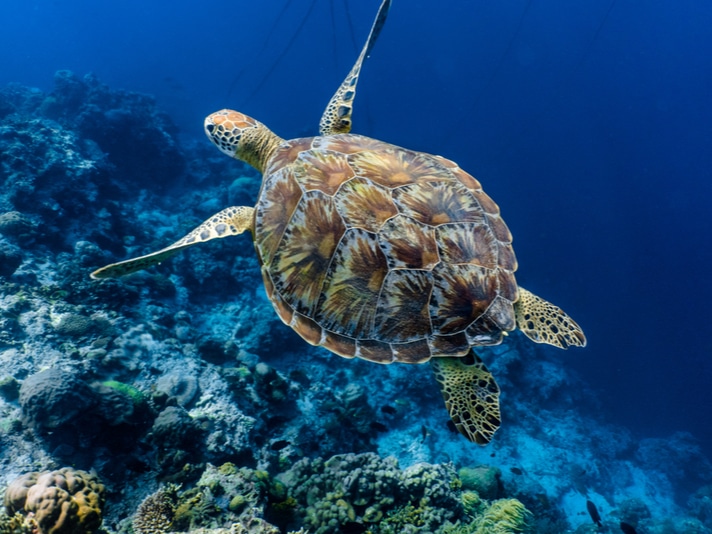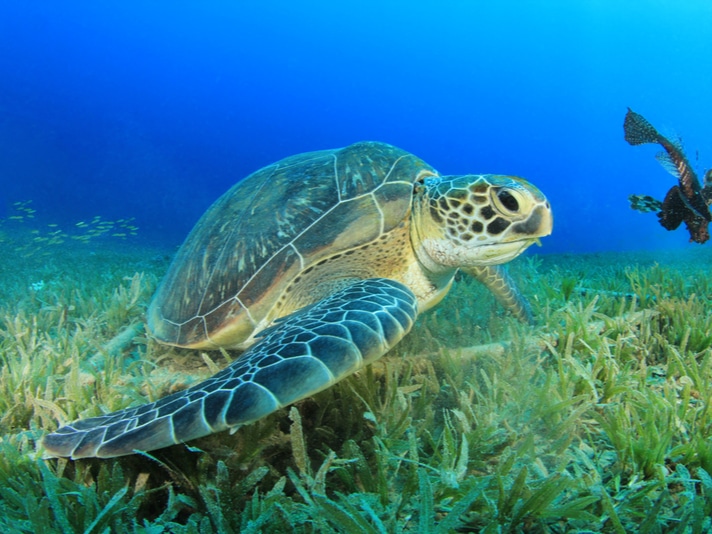The marine turtle is now listed as a species of Least Concern, thanks to decades of conservation efforts.
The green sea turtle (Chelonia mydas) has been removed from the International Union for Conservation of Nature and Natural Resources (IUCN) Endangered species status and is now listed as Least Concern, thanks to decades of conservation efforts. According to the IUCN, the population of the green sea turtle has increased by 28 percent since the 1970s when the reptile was placed on the IUCN Red List.

The green sea turtle is now a species of Least Concern. Photo by John Cuyos/Shutterstock
“Green turtles are keystone species in tropical marine ecosystems such as seagrass meadows and coral reefs, and have held cultural, culinary, spiritual, and recreational importance for people worldwide for millennia,” the IUCN wrote in an October 10 press release. “Conservation efforts have focused on protecting nesting females and their eggs on beaches, expanding community-based initiatives to reduce unsustainable harvest of turtles and their eggs for human consumption, curtailing trade, and using Turtle Excluder Devices and other measures to reduce the accidental capture of turtles in fishing gear.”
Contaminants Ingested By Female Green Sea Turtles May Cause More Female Hatchlings
Studies over the years have pointed to a rebound in the turtle’s populations. Populations of green sea turtles in and around Hawaii and American Pacific island territories have increased, sometimes by an average of 8 percent each year since scuba diving researchers began counting them in 2002, according to a 2019 study published in the PLOS One journal. The researchers went around 53 islands, atolls, and coral reefs in the U.S. Pacific from 2002 to 2015 and counted more than 3,400 sea turtles, 90.1 percent of which were green sea turtles. Sea turtle counts around Hawaii experienced an 8 percent increase, while the number of sea turtles around American Samoa and the Mariana Islands increased by an average of 4 percent a year.
“The ongoing global recovery of the green turtle is a powerful example of what coordinated global conservation over decades can achieve to stabilise and even restore populations of long-lived marine species. Such approaches must focus not only on the turtles, but on keeping their habitats healthy, and their ecological functions intact. Sea turtles cannot survive without healthy oceans and coasts, and humans can’t either. Sustained conservation efforts are key to assuring that this recovery lasts,” said Roderic Mast, Co-Chair of IUCN’s Species Survival Commission Marine Turtle Specialist Group.



